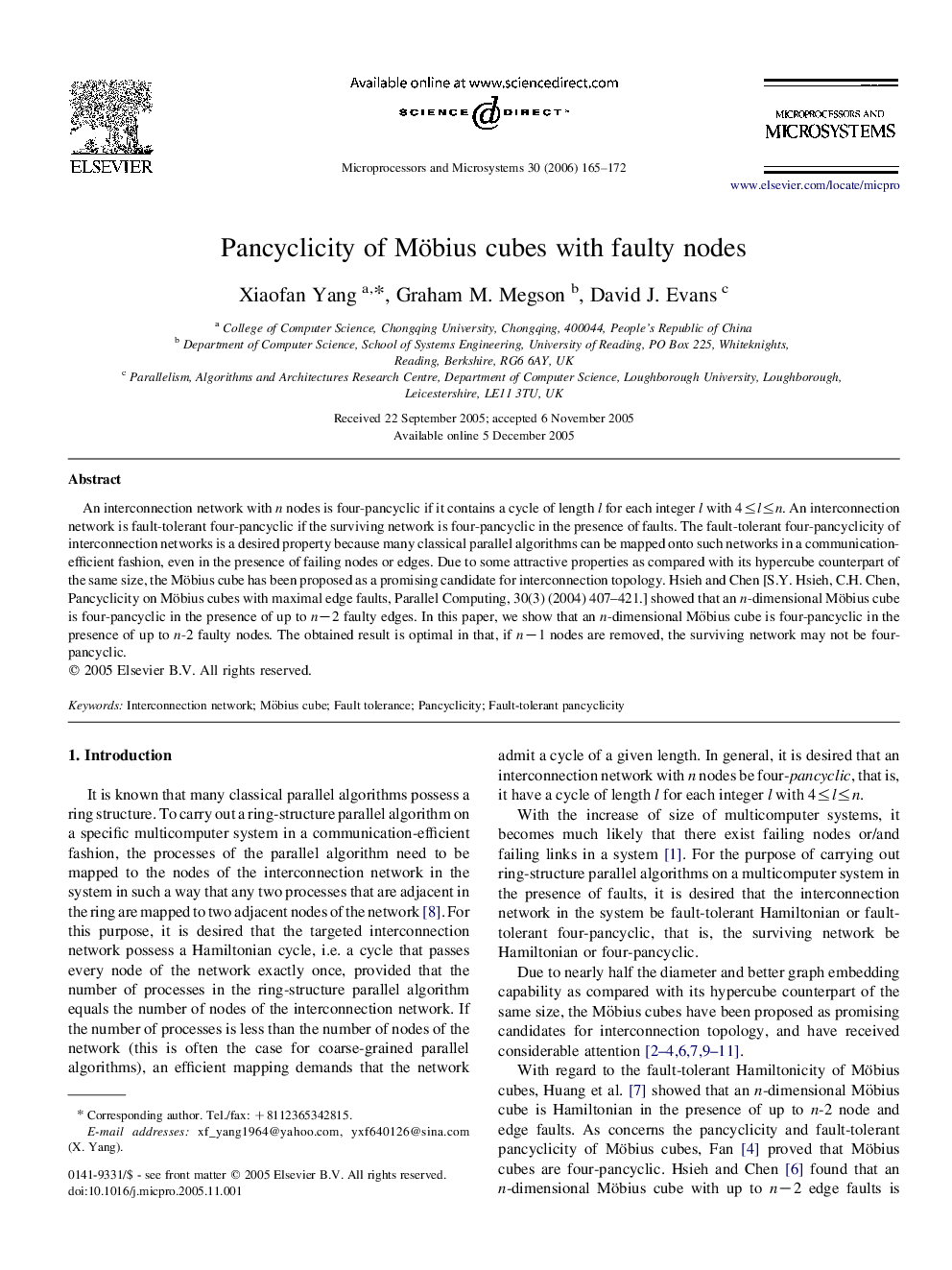| Article ID | Journal | Published Year | Pages | File Type |
|---|---|---|---|---|
| 463156 | Microprocessors and Microsystems | 2006 | 8 Pages |
An interconnection network with n nodes is four-pancyclic if it contains a cycle of length l for each integer l with 4≤l≤n. An interconnection network is fault-tolerant four-pancyclic if the surviving network is four-pancyclic in the presence of faults. The fault-tolerant four-pancyclicity of interconnection networks is a desired property because many classical parallel algorithms can be mapped onto such networks in a communication-efficient fashion, even in the presence of failing nodes or edges. Due to some attractive properties as compared with its hypercube counterpart of the same size, the Möbius cube has been proposed as a promising candidate for interconnection topology. Hsieh and Chen [S.Y. Hsieh, C.H. Chen, Pancyclicity on Möbius cubes with maximal edge faults, Parallel Computing, 30(3) (2004) 407–421.] showed that an n-dimensional Möbius cube is four-pancyclic in the presence of up to n−2 faulty edges. In this paper, we show that an n-dimensional Möbius cube is four-pancyclic in the presence of up to n-2 faulty nodes. The obtained result is optimal in that, if n−1 nodes are removed, the surviving network may not be four-pancyclic.
